Our first stop of the day was at the Indian cemetery in Neuve-Chapelle. Neuve Chapelle is a small town located about thirty km north of Vimy Ridge. We ended up parking just outside the Portugese cemetery because we mistook it for the Indian one and so we had a very short walk down the road to get to the Indian cemetery. Here is some information about the site and the Indian Corps from the CWGC:
"The Indian Memorial at Neuve Chapelle commemorates over 4,700 Indian soldiers and labourers who lost their lives on the Western Front during the First World War and have no known graves. The location of the memorial was specially chosen as it was at Neuve Chapelle in March 1915 that the Indian Corps fought its first major action as a single unit. The memorial takes the form of a sanctuary enclosed within a circular wall after the manner of the enclosing railings of early Indian shrines. The column in the foreground of the enclosure stands almost 15 feet high and was insipired by the famous inscribed columns erected by the Emperor Ashoka throughout India in the 3rd century BC.
The column is surmounted with a Lotus Capital, the Imperial British Crown and the Star of India. Two tigers are carved on either side of the column guarding the temple of the dead. On the lower part of the column the words 'God is One, His is the Victory' are inscribed in English, with similar texts in Arabic, Hindi, and Gurmukhi. Neuve Chapelle was occupied by the Germans during the Second World War and served as a base for the Luftwaffe. It was also the scene of heavy fighting during the German retreat in 1944. Shrapnel damage dating from this period can be seen beneath the column. At Neuve Chapelle, from 10-13 March 1915, Indian soldiers made up half of the attacking force and despite suffering very heavy casualties succeeded in capturing important sections of the German line. The officers and men of the Corps further distinguished themselves at St. Julien in the Ypres Salient in April 1915, at Aubeers Ridge and Festubert in May, and at Loos in September before being redeployed to the Middle East in December."
This memorial was definitely very different to all the others we had seen so far and we spent a bit of time walking around it and taking it in from different viewpoints. We also noticed the shrapnel damage at the base of the large column that had been mentioned on the info panel outside. From the memorial, it was only about an hour to drive to Ieper (Ypres) in Belgium. In the Flanders region of Belgium, Flemish is spoken and is similar to Dutch, neither of which we understand. Fortunately, almost everyone here seems to speak at least a little bit of English (you’re better off asking if they speak English rather than French). We found the campsite without difficulty, had a leisurely lunch and a cup of tea before heading into town to visit the “In Flanders Fields” museum.
The town was only a ten minute walk from the campsite and it was along a lovely walking path for the first part and then along the canal. We walked along the ramparts of the town and soon came across the immense Menin gate. The history behind this gate is that Churchill wanted to turn the entire town of Ypres, where 185,000 Commonwealth soldiers died (more than 100,000 without a known grave), into a memorial. The residents of Ypres were not so keen on this idea as they wanted to return to their hometown, rebuild it, and continue on with their lives. The ramparts and the Menin gate (which originally existed as an entrance to this town) were kept in their ruined state until the British could come up with a feasible plan. When the idea of turning the gate into a memorial was proposed, it was accepted by the Belgian government. The gate holds the names of about 60,000 soldiers and is a humbling site. We walked down from the ramparts, through the gate and on to the museum in the center of town. The “In Flanders Fields” museum is located in the central square or ‘Markt’ (Market) Square in what used to be the old cloth hall. Ypres, like the other major centers in Belgium, was once a major player in the textile industry in early Europe and thus has a cloth hall. The market square was very impressive with its enormous cloth hall, bell tower and beautiful facades lining each corner. Looking around, it was hard to imagine all of this bombed to the ground and being rebuilt within the last 100 years.
The museum was very well laid out and gave voice to the many battles of Ypres and some of the areas surrounding it. It was a very modern museum, with each visitor given a remembrance poppy bracelet with embedded RFID tag. This bracelet, when scanned at various displays, relayed stories about particular soldiers and their life story (which usually ended in their death at some point during the war).
The museum did not hold back on displaying graphic images and there were several displays with photographs of the effects of the first chlorine gas attack by the Germans and also about those whose bodies were mutilated for life because of the fighting. We also noticed that a few of the displays included items (such as the propaganda posters and the Daily Mail war map) that we had seen at the Historial museum. There were plenty of personal artifacts that had been recovered from the battlefields and these were displayed along with some background about the soldier it belonged to. There were four to five short video sequences in which actors gave monologues from the point of view of soldiers, refugees and medical staff. These videos were extremely well done and were based on the stories of real people so they added a very personal touch and made it just that much more relatable for the visitors. It was an excellent museum and we would definitely recommend it to anyone visiting Ypres.
We were in the museum for a couple of hours and were a bit peckish by the time we left. We conveniently happened upon a chocolate shop across the museum. Actually, there were probably about four or five chocolate shops in the square alone so it was hard not to be lured into one. We went in and the aroma was just too much to resist and we came out with a 250g box of the finest Belgian chocolates. As soon as we left the shop, we opened up the box and sampled a couple pieces and they were simply delicious and melted in your mouth. We were only spending a few days in Belgium so we didn’t want to waste any time when it came to sampling the local specialties. As we walked back towards camp, we happened upon a frituur (fries shop) and since the Belgians invented fries, we decided to try some. We got a ‘special’ fries which was a large helping of fries covered in ketchup, mayo and raw onions.
I’ve never had raw onions with my fries so I wasn’t quite sure how it would be but it did not disappoint – it just adds that little bit of crunch when you’re chewing down on the fries. I thought I would get most of the fries for myself because it was covered in mayo (which Megs generally doesn’t like) but to my chagrin, she tried them and decided that they actually tasted quite good. So I was forced to share… We walked back to camp and were feeling quite full after our chocolates and fries and thus decided that we would just have some salad for dinner. Our first day in Belgium had been a very pleasant one and we looked forward to sampling more chocolate, fries and let’s not forget, Belgian waffles, over the next few days.
We began the day by visiting the Tyne Cot cemetery, north-east of Ypres, which is near the site of the Passchendaele battle. This is the largest Commonwealth cemetery and is the final resting place of 11,956 soldiers. It also contains the graves of three German soldiers. The cemetery is named for a blockhouse on the site that was taken by British forces and was nicknamed then as ‘Tyne Cottage’, after a river in North England. The seemingly endless rows of grave markers are surrounded by a semi-circular wall at the top of the cemetery that bear the names of 34,857 officers and soldiers who have no known grave. These names are a continuation of the names that wouldn’ t fit on Menin gate and list casualties from about 1916 onwards. Even of the thousands buried in the cemetery, many of the gravestones simply say “A soldier of the Great War, known to God”, indicating that the buried remains were unidentifiable.
We visited the information center first which provided a bit of background on the battle that took place here. There were a few artifacts from the war that were displayed but the most moving of them were the letters written by soldiers to their families and vice versa; soldiers that were alive and when the letter was written and dead before their letter reached home. There were also a few letters from the Red Cross to families informing them, unofficially, of the death of a son they had inquired about.
Of all the artifacts I’ve seen about WWI, I think these are the definitely some of the most relatable and saddening ones. There was a quote on one of the walls of the museum and I think it really concisely expressed the impact that the war had on all the families of the soldiers: “The thought that Jock died for his country is no comfort to me. His memory is all I have left to love” John Law’s fiancée, 10 January 1918.
We soon made our way to the cemetery itself and aside from the one in Thiepval, the memorial is one of the largest in the area. The rows and rows or graves seem to stretch for a long while and reminded me of the cemetery we had seen in Douaumont, near Verdun. There was restoration work going on so we approached the Cross of Sacrifice from the outer edges of the rows. Looking at the gravestones, we were hard pressed to find many soldiers over the age of 25. Behind the cross, there was a higgledy-piggledy arrangement of grave markers. This was quite strange in a cemetery that was so neatly and symmetrically laid out. It turns out that the cross marks the location of medic station during the war and the graves nearby were those that were buried during the war when they couldn’t be saved by the medics.
Among these were the graves of three German soldiers and the main difference we could see was that their tombstones were very plain - there was no formal explanation as to why these graves were here and our guess was that they had been buried here during the war and thus weren’t moved.
From Tyne Cot cemetery, we made a quick stop at the Canadian memorial of the ‘Brooding Soldier’, in St. Julien. This memorial is unique that it is very simple yet evocative. The top of the column is carved with a soldier, head hung, and hands resting on the butt of his rifle as in remembrance of his fellow soldiers.
The central obelisk marks the battlefield where 18,000 Canadians on the British Left withstood the first German gas attacks from 22-24th April, 1915. Of these soldiers, 2,000 fell and are buried nearby.
From here, we went to the nearby German cemetery of Langemark. This cemetery was laid out in the 1930s and its upkeep is funded purely by donations of its friends and members of the Volksbund. In the 22 days battle of the Yser and Ypres, the 4th army fought on the German side. For the most part, it was mainly made up of poorly trained volunteers: students and apprentices. The front got bogged down here in 1914 until the end of the war in 1918. There were many German losses and this site soon became known in Germany as the “student cemetery”. Between 1956 and 1958, the Belgian burial services closed down many German cemeteries and their dead were transferred here to Langemark. Today, 44,304 soldiers lie here. This cemetery is also unique in that it contains a communal grave (containing more than 24,000 unknown soldiers) and all its grave markers are black, in contrast to all the Allied cemeteries. Many of the grave markers in this cemetery also had inscribed on them several names per marker and the grave stones were simply a black, rectangular stone slab laid in the ground.
As per the Treaty of Versailles, German cemeteries were not allowed to use white and explains the sombre colours and use of wood in their memorial. This was the first German cemetery we had been to and seeing the names of the thousands of students, who can hardly be called soldiers, you realize that most of these people probably never wanted to fight and it is not so easy to label them as the enemy or the aggressors.
From Langemark, we headed back towards Ypres and along the way, stopped at the Essex Farm memorial. This was the site where Lieutenant-Colonel John McCrae wrote “In Flanders Fields”, while serving as a military surgeon. The site has the remains of an advanced medical station and a cemetery. The medical station was essentially four concrete rooms built into a small mound of earth. The rooms were designated for different purposes such as “Wounded for Evacuation”, “Dressing Room”, “Stretcher Cases” and “Officers Mess”. It was from stations such as these the wounded received their first treatments before being evacuated by motorised ambulances to more permanent hospitals and aid stations behind the line.
We walked around the site and as with nearly all the other war memorials or cemeteries, it appeared so peaceful. Essex Farm was right alongside a canal and all the others were mostly surrounded by farm fields with almost all traces of battle erased. On the way out of the cemetery, we came across the grave of V.J. Strudwick (killed in 1916, at only 15 years of age), one of the youngest who fought during the war.
Ypres and WWI Memorials
Wednesday, April 03, 2013
 Ypres, West Flanders, Belgium
Ypres, West Flanders, Belgium
Other Entries
-
103Albi: Toulouse-Lautrec & amazing cathedral
Feb 2735 days prior Albi, Francephoto_camera15videocam 0comment 0
Albi, Francephoto_camera15videocam 0comment 0 -
104Bastides in the Lot
Feb 2834 days prior Cordes-sur-Ciel, Francephoto_camera24videocam 0comment 3
Cordes-sur-Ciel, Francephoto_camera24videocam 0comment 3 -
105Return to Rocamadour
Mar 0133 days prior Rocamadour, Francephoto_camera9videocam 0comment 0
Rocamadour, Francephoto_camera9videocam 0comment 0 -
106Market Day in Sarlat
Mar 0232 days prior Sarlat-la-Canéda, Francephoto_camera21videocam 0comment 1
Sarlat-la-Canéda, Francephoto_camera21videocam 0comment 1 -
107Marquessac Gardens
Mar 0331 days prior Vezac, Francephoto_camera29videocam 0comment 2
Vezac, Francephoto_camera29videocam 0comment 2 -
108Three "Plus Beaux Villages"
Mar 0430 days prior Domme, Francephoto_camera18videocam 0comment 0
Domme, Francephoto_camera18videocam 0comment 0 -
109A day for chores
Mar 0529 days prior Sarlat-la-Canéda, Francephoto_camera13videocam 0comment 1
Sarlat-la-Canéda, Francephoto_camera13videocam 0comment 1 -
110Relaxing in the Dordogne
Mar 0925 days prior Beynac-et-Cazenac, Francephoto_camera54videocam 0comment 2
Beynac-et-Cazenac, Francephoto_camera54videocam 0comment 2 -
111Prehistoric Art in the Dordogne
Mar 1123 days prior Les Eyzies-de-Tayac, Francephoto_camera15videocam 0comment 1
Les Eyzies-de-Tayac, Francephoto_camera15videocam 0comment 1 -
112Market Day in Brantome
Mar 1519 days prior Brantome, Francephoto_camera23videocam 0comment 1
Brantome, Francephoto_camera23videocam 0comment 1 -
113Chateau de Fontainebleau
Mar 1717 days prior Fontainebleau, Francephoto_camera53videocam 0comment 0
Fontainebleau, Francephoto_camera53videocam 0comment 0 -
114Chateau de Vaux-le-Vicomte
Mar 1915 days prior Vaux-le-Vicomte, Francephoto_camera51videocam 0comment 0
Vaux-le-Vicomte, Francephoto_camera51videocam 0comment 0 -
115Paris
Mar 277 days prior Paris, Francephoto_camera139videocam 2comment 2
Paris, Francephoto_camera139videocam 2comment 2 -
116WWI Museum in Peronne
Mar 286 days prior Peronne, Francephoto_camera41videocam 0comment 1
Peronne, Francephoto_camera41videocam 0comment 1 -
117"Van"dalism
Mar 295 days prior Peronne, Francephoto_camera3videocam 0comment 0
Peronne, Francephoto_camera3videocam 0comment 0 -
118Memorials of the Somme
Mar 313 days prior Albert, Francephoto_camera29videocam 0comment 0
Albert, Francephoto_camera29videocam 0comment 0 -
119Vimy Ridge
Apr 012 days prior Vimy, Francephoto_camera26videocam 0comment 0
Vimy, Francephoto_camera26videocam 0comment 0 -
120Ypres and WWI Memorials
Apr 03 Ypres, Belgiumphoto_camera57videocam 0comment 0
Ypres, Belgiumphoto_camera57videocam 0comment 0 -
121Belgian Treats in Bruges
Apr 052 days later Brugge, Belgiumphoto_camera55videocam 0comment 0
Brugge, Belgiumphoto_camera55videocam 0comment 0 -
122More Belgian Treats in Ghent
Apr 063 days later Ghent, Belgiumphoto_camera28videocam 0comment 1
Ghent, Belgiumphoto_camera28videocam 0comment 1 -
123Moules in Dunkerque
Apr 074 days later Dunkerque, Francephoto_camera11videocam 0comment 1
Dunkerque, Francephoto_camera11videocam 0comment 1 -
124Côte d’Opal
Apr 096 days later Wimereux, Francephoto_camera14videocam 0comment 1
Wimereux, Francephoto_camera14videocam 0comment 1 -
125Van repaired and a visit to Brighton
Apr 118 days later Brighton, United Kingdomphoto_camera16videocam 0comment 1
Brighton, United Kingdomphoto_camera16videocam 0comment 1 -
126Open Air Museum in Arnhem
Apr 1411 days later Arnhem, Netherlandsphoto_camera55videocam 0comment 2
Arnhem, Netherlandsphoto_camera55videocam 0comment 2 -
127Amsterdam
Apr 1714 days later Amsterdam, Netherlandsphoto_camera72videocam 0comment 2
Amsterdam, Netherlandsphoto_camera72videocam 0comment 2 -
128Aalsmeer Flower Auction
Apr 1815 days later Aalsmeer, Netherlandsphoto_camera47videocam 3comment 0
Aalsmeer, Netherlandsphoto_camera47videocam 3comment 0 -
129Cheese Market in Alkmaar
Apr 1916 days later Alkmaar, Netherlandsphoto_camera62videocam 0comment 0
Alkmaar, Netherlandsphoto_camera62videocam 0comment 0 -
130The Historic Triangle
Apr 2017 days later Hoorn, Netherlandsphoto_camera81videocam 2comment 3
Hoorn, Netherlandsphoto_camera81videocam 2comment 3 -
131Fishing Village of Marken
Apr 2118 days later Marken, Netherlandsphoto_camera21videocam 0comment 1
Marken, Netherlandsphoto_camera21videocam 0comment 1 -
132Edam, Tulips & Windmills
Apr 2219 days later Lisse, Netherlandsphoto_camera49videocam 0comment 1
Lisse, Netherlandsphoto_camera49videocam 0comment 1 -
133Canal Boating on the Bourgogne
May 0128 days later Migennes, Francephoto_camera110videocam 5comment 3
Migennes, Francephoto_camera110videocam 5comment 3 -
134Trapped by the Floods
May 0431 days later Fleurey-sur-Ouche, Francephoto_camera48videocam 1comment 0
Fleurey-sur-Ouche, Francephoto_camera48videocam 1comment 0 -
135Canal Boating on the Lateral Canal to the Loire
May 0936 days later Briare, Francephoto_camera99videocam 3comment 4
Briare, Francephoto_camera99videocam 3comment 4 -
136Dinan
May 1340 days later Dinan, Francephoto_camera42videocam 0comment 1
Dinan, Francephoto_camera42videocam 0comment 1 -
137Coastal Walk & Saint Malo
May 1441 days later Saint-Malo, Francephoto_camera21videocam 0comment 0
Saint-Malo, Francephoto_camera21videocam 0comment 0 -
138Fort-la-Latte & Cap Frehel
May 1542 days later Fort-la-Latte, Francephoto_camera40videocam 0comment 0
Fort-la-Latte, Francephoto_camera40videocam 0comment 0

 Ypres, West Flanders, Belgium
Ypres, West Flanders, Belgium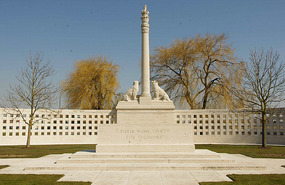
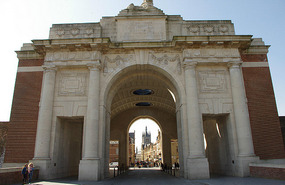
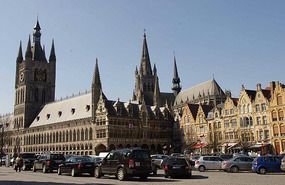
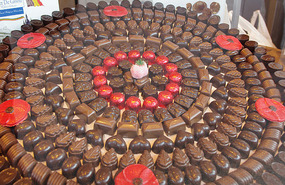
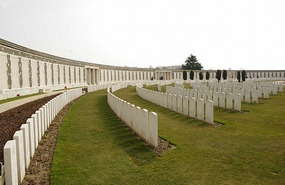
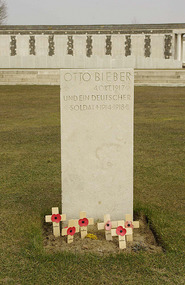
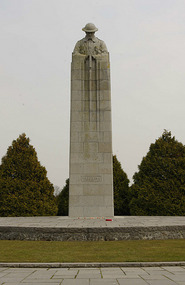
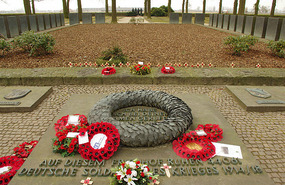
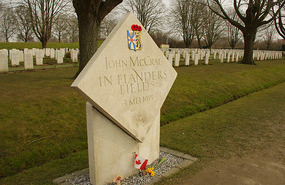




















































2025-05-22